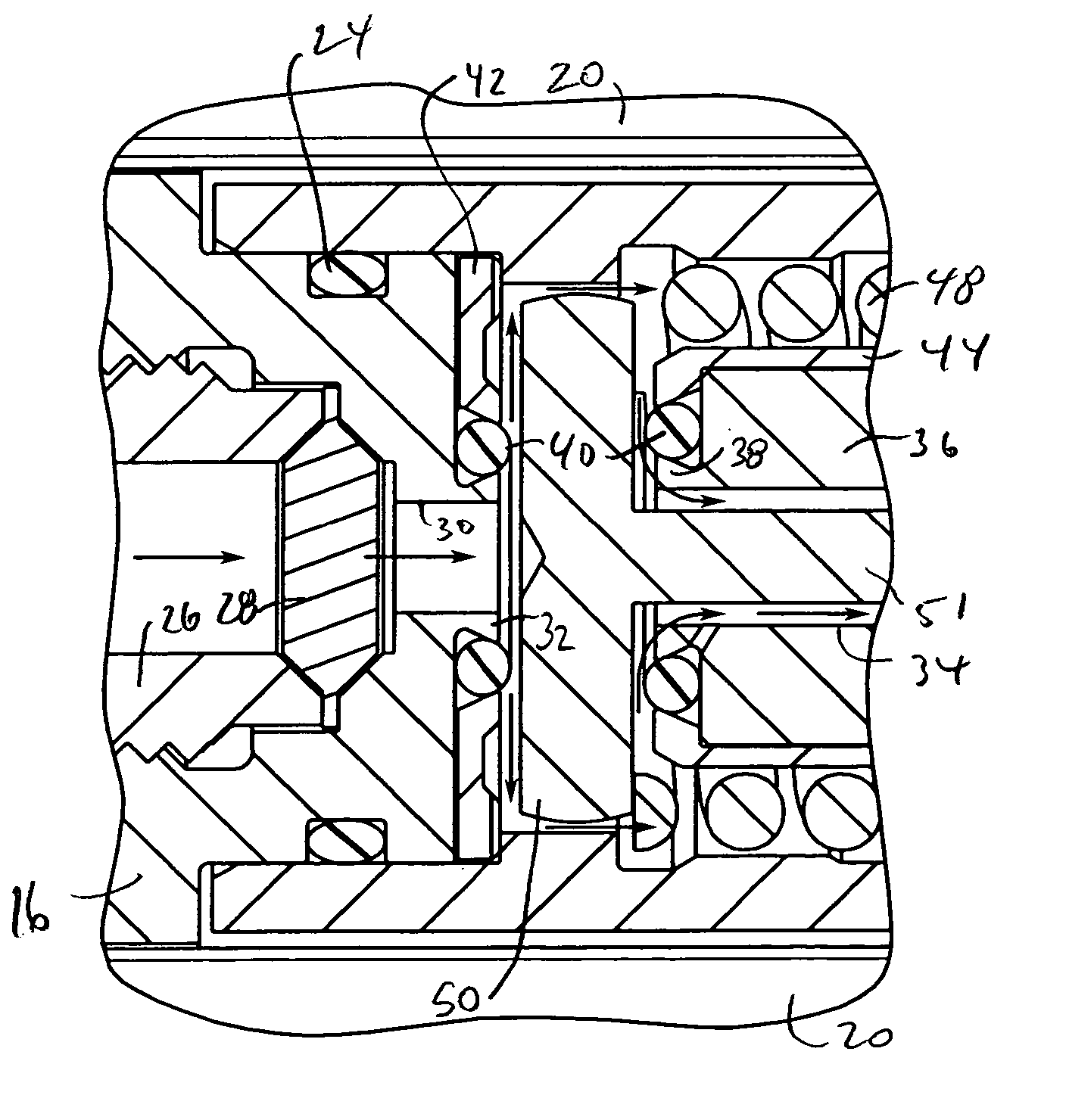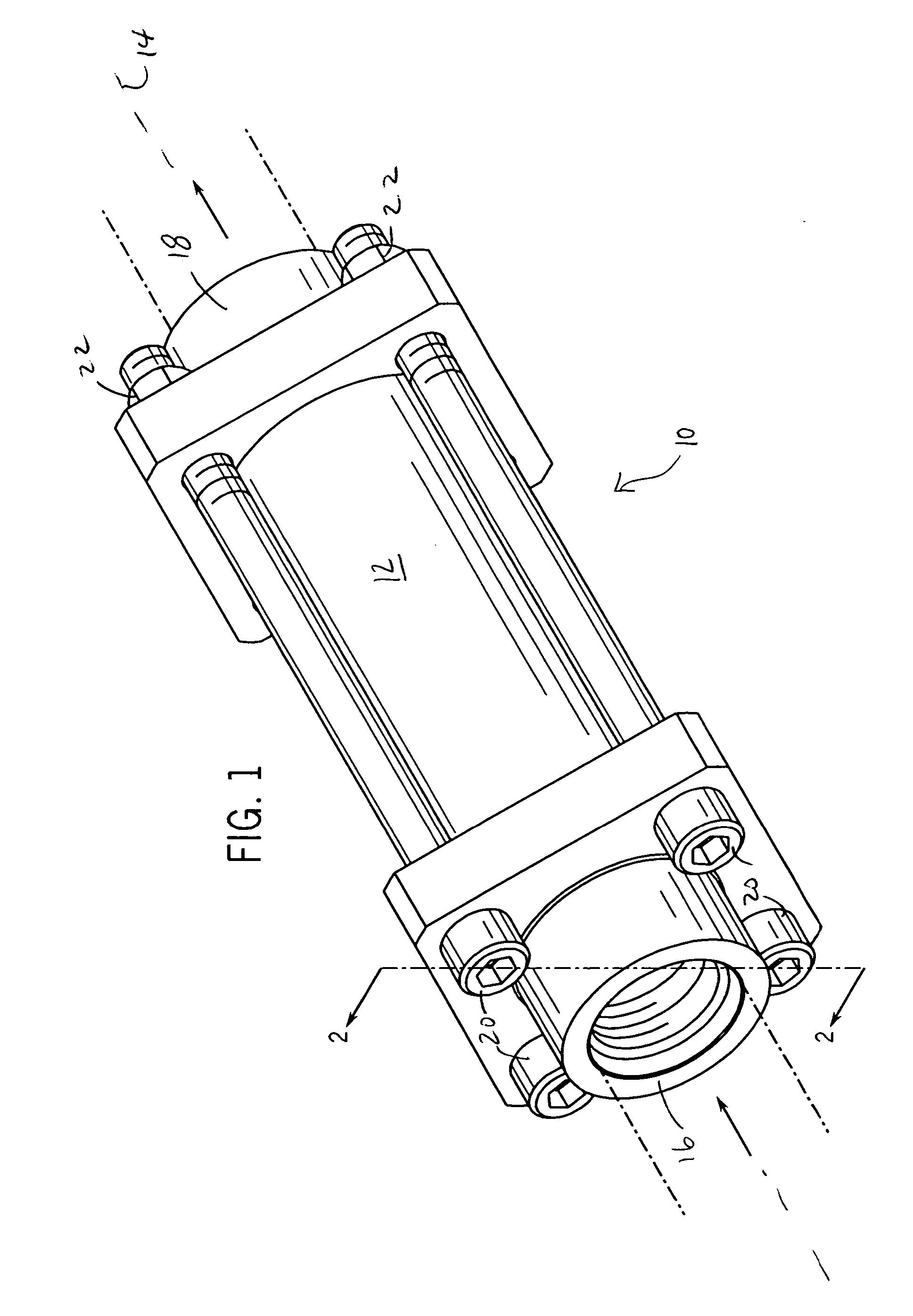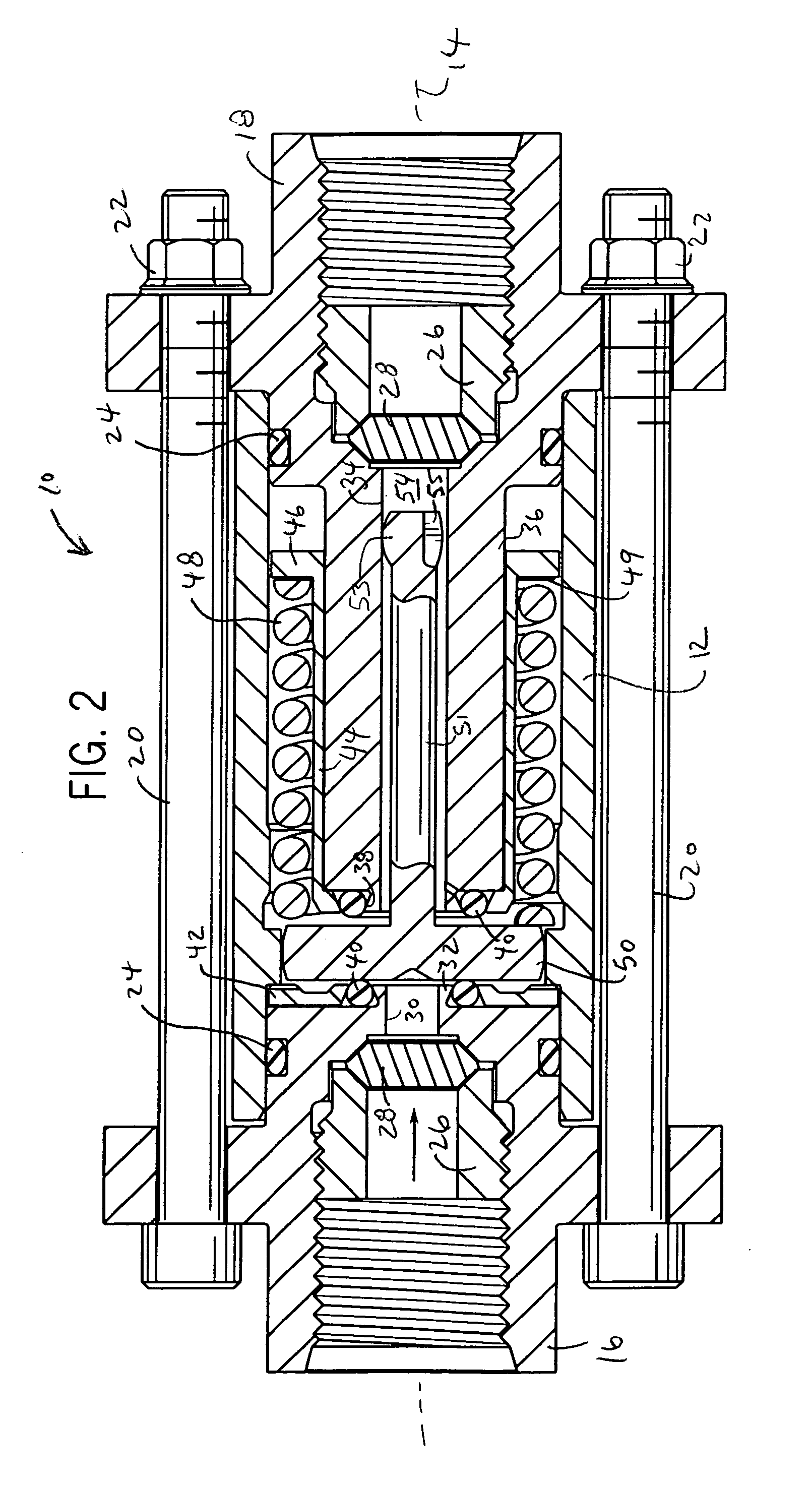Relief valve
a valve and valve body technology, applied in the direction of valve operating means/releasing devices, functional valve types, machines/engines, etc., can solve the problems of high pressure transients unwanted pressure loss in this stage, and significant pressure rise in the liquid fuel system. , to achieve the effect of relieving pressure, preventing significant pressure loss, and relieving thermal high pressure transients
- Summary
- Abstract
- Description
- Claims
- Application Information
AI Technical Summary
Benefits of technology
Problems solved by technology
Method used
Image
Examples
Embodiment Construction
[0027] The present invention provides a relief valve 10 (see FIG. 1) particularly suited for use with dual fuel turbines in which the turbine consumes either liquid or gaseous fuel at one or more stages of operation. Such turbines are typically large industrial turbines used for power generation, and they typically burn liquid fuel (such as diesel fuel) during start-up and switch to gaseous fuel (such as natural gas) during sustained operation. In this context, the relief valve 10 is used to relieve transient high pressure in the liquid fuel system of the turbine, which can occur at start-up, the transition to gaseous fuel and as the liquid fuel is heated by the elevated ambient temperature surrounding the combustion areas of the turbine during operation on gaseous fuel. The valve is normally closed at turbine ignition when liquid fuel is used and during the dynamic transfer from gaseous to liquid fuel usage, and can be opened when high pressure transients arise during gaseous fuel ...
PUM
 Login to View More
Login to View More Abstract
Description
Claims
Application Information
 Login to View More
Login to View More - R&D
- Intellectual Property
- Life Sciences
- Materials
- Tech Scout
- Unparalleled Data Quality
- Higher Quality Content
- 60% Fewer Hallucinations
Browse by: Latest US Patents, China's latest patents, Technical Efficacy Thesaurus, Application Domain, Technology Topic, Popular Technical Reports.
© 2025 PatSnap. All rights reserved.Legal|Privacy policy|Modern Slavery Act Transparency Statement|Sitemap|About US| Contact US: help@patsnap.com



